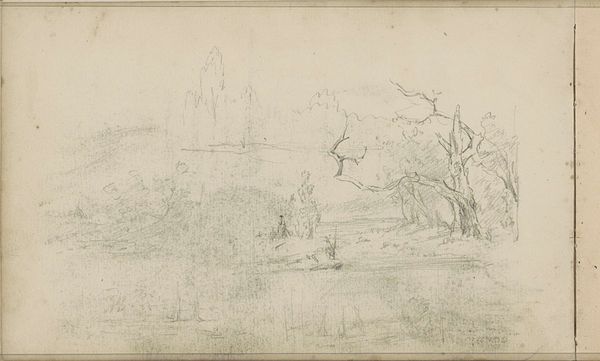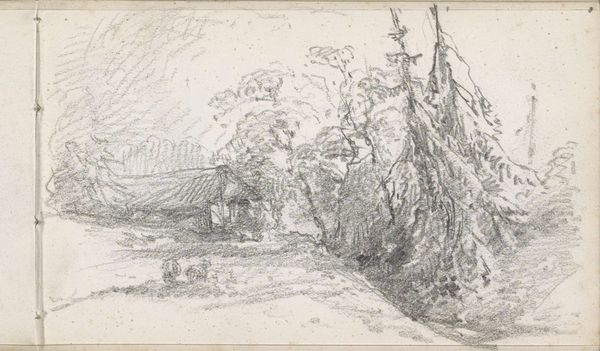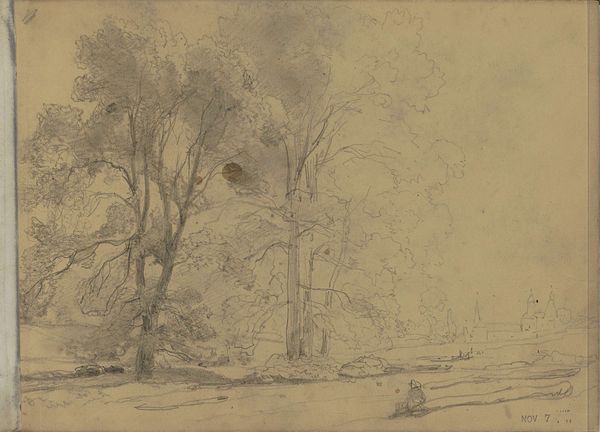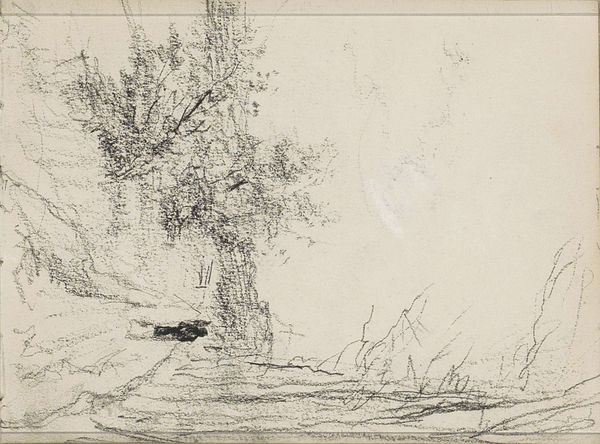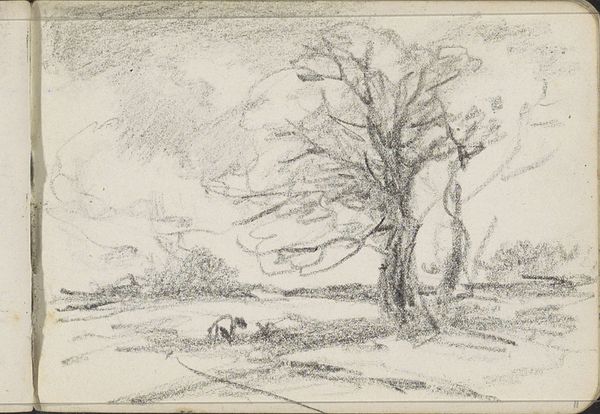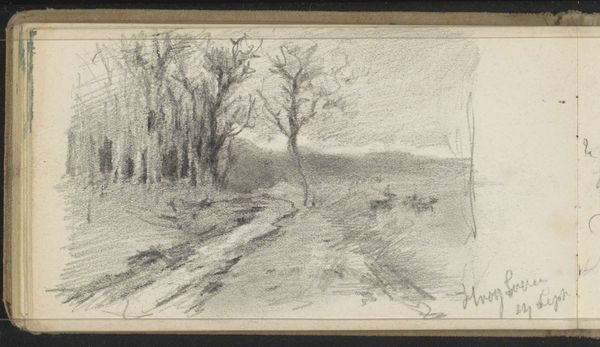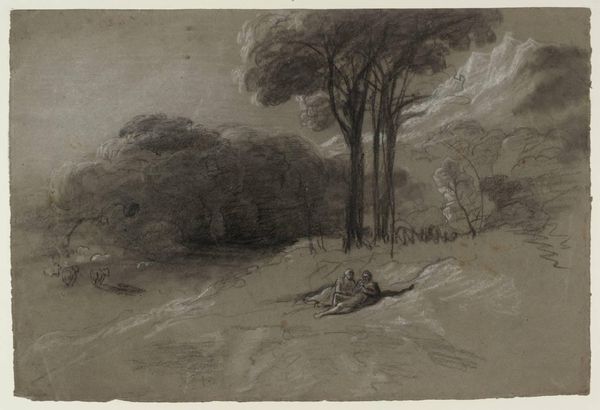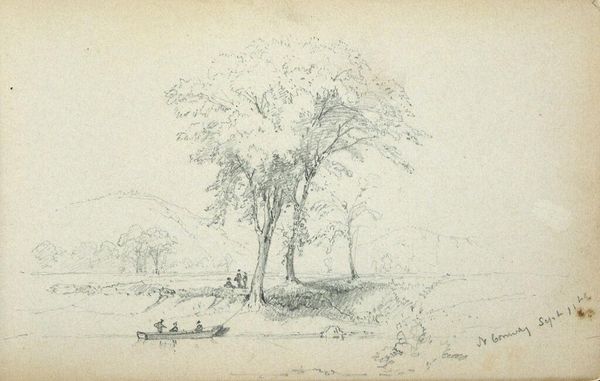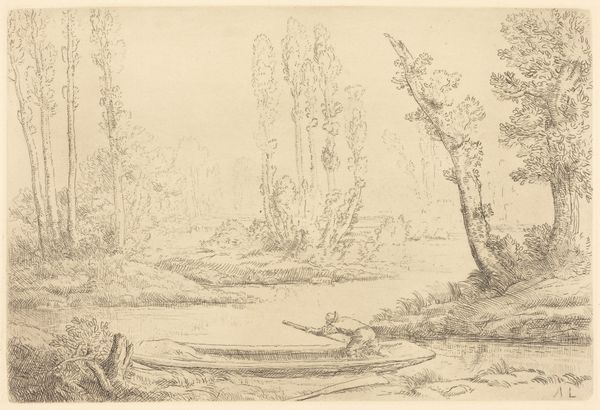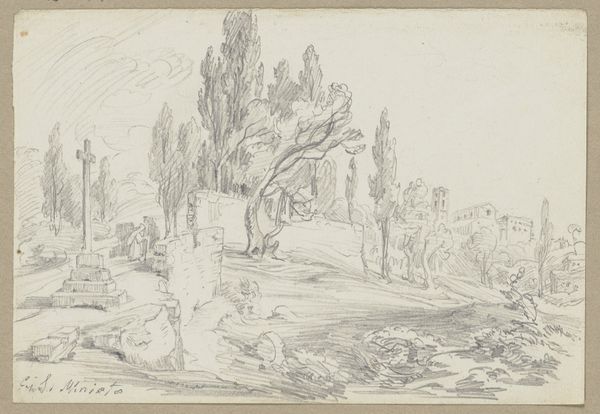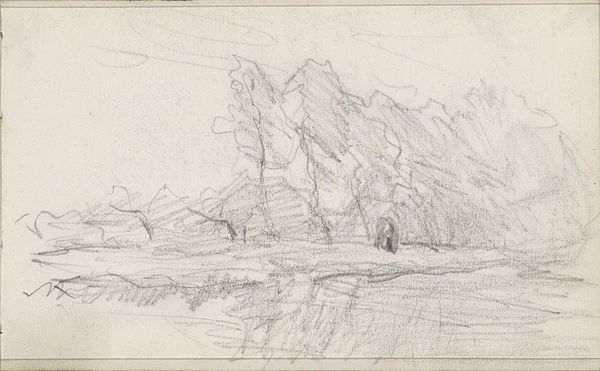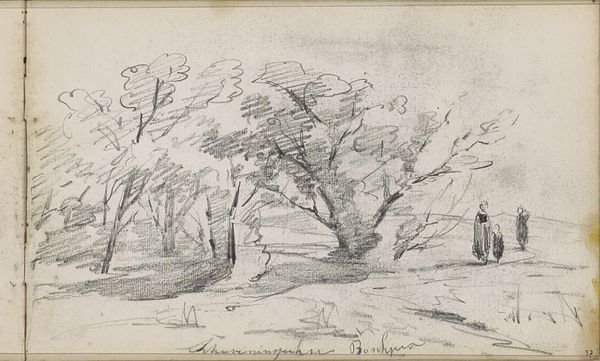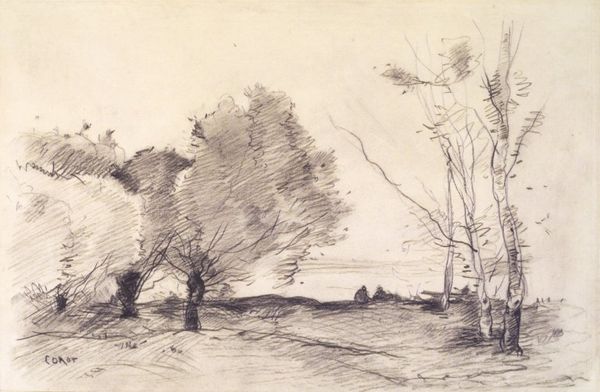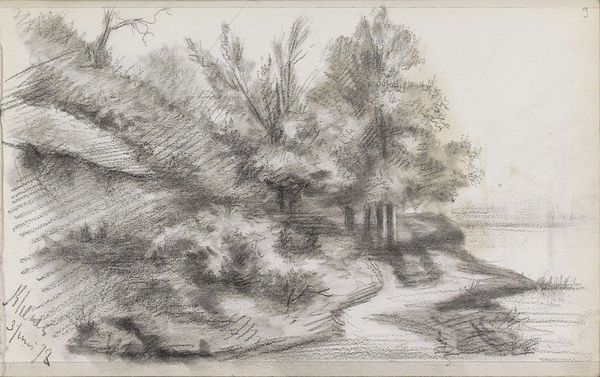
#
amateur sketch
#
aged paper
#
toned paper
#
light pencil work
#
pencil sketch
#
incomplete sketchy
#
personal sketchbook
#
watercolour illustration
#
sketchbook art
#
watercolor
Dimensions: height 142 mm, width 218 mm
Copyright: Rijks Museum: Open Domain
Editor: This is "Landschap met toren" or "Landscape with Tower" by Willem Cornelis Rip, dating from 1874-1875. It's a watercolor and pencil sketch on toned paper. I’m struck by its quiet mood. The landscape feels both familiar and a little…distant. What stands out to you? Curator: What I see is a representation embedded in a specific historical and social moment. This landscape, even in its apparent simplicity, is deeply connected to broader narratives about the relationship between humanity and nature in the late 19th century. Do you think the tower suggests a specific type of societal structure? Editor: Maybe. I hadn't really considered the social element. It could represent the church or some other form of authority? The tower isn’t very prominent in the landscape though. Curator: Exactly. That's the crucial element. Consider the positioning; almost engulfed by the trees. In a period marked by increasing industrialization and social stratification, how might we read this seemingly innocuous landscape? Rip subtly critiques the dominance of social hierarchies by placing these structures within a nature reclaiming process. This piece also hints at emerging social movements, those who longed for a life far from urbanization. The understated depiction of the tower serves as an act of quiet rebellion against entrenched power structures. Editor: So you see it as a statement about power and society at that time, a desire for change? That's a really interesting perspective. I was only viewing it as a calm, muted landscape drawing. Curator: It's crucial to analyze artworks through multiple lenses to deepen our comprehension. By positioning Rip's work within its era, and relating it to gender, class, and environmental concerns, the image presents a deeper, relevant message about power, freedom, and environmental reclamation. It allows for an inclusive appreciation and recognition. Editor: I’ve definitely learned to look beyond just the visual elements today! Thank you! Curator: My pleasure. It's by making those kinds of connections that we gain a more thorough awareness of both the artwork and ourselves.
Comments
No comments
Be the first to comment and join the conversation on the ultimate creative platform.
